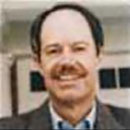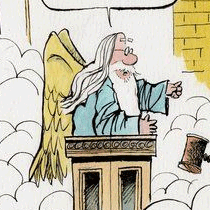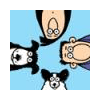Take Me Out to the Call Game
As the Major League Baseball season rolls into the critical month of September, let's examine the fascinating origins of some colorful diamond lingo. I'm indebted to "The New Dickson Baseball Dictionary" by Paul Dickson (Harcourt Brace, $20) for many of these derivations.
-- around the horn -- You might assume that this term for throwing the ball clockwise around the infield -- from third to second to first -- arose because an infield is curved like an animal's horn.
In fact, it refers to Cape Horn at the tip of South America. Before the building of the Panama Canal, ships were forced to sail far out of their way to round the continent, much as a baseball thrown from infielder to infielder to infielder takes a circuitous route. (Perhaps a direct throw from third to first should be called a "Panama Canal.")
Cape Horn, by the way, isn't named for an animal's horn either. Willem Schouten, the Dutch navigator who first rounded this landform in 1616, named it for his birthplace, the city of Hoorn in northern Holland. So Schouten was tooting his own "Hoorn."
-- Speaking of sailing, have you ever noticed how many baseball terms derive from maritime expressions? A manager is said to be "at the helm," teams have a "captain," pitchers throw "submarines" and "sinkers," fielders play "deep" and "shallow," the next batter is "on deck" and a poor infielder is called an "ancient mariner" because, like the title character in Samuel Coleridge's famous poem, "he stoppeth one of three."
-- bunt -- This term has been used for centuries as a variant of "butt," so in baseball it came to denote a ball butted or tapped with a loosely held bat. This term received an additional nudge from railroading, where a locomotive was said to "bunt" an uncoupled freight car into motion.
-- battery -- This term for the pitcher and catcher has two possible explanations -- one electronic, one military.
Some baseball historians trace it to electric batteries, with the pitcher and catcher as the positive and negative poles respectively. But others say "battery" alludes to the pitcher and catcher as an artillery unit, which is consistent with an old term for the pitcher's mound -- "firing line" as well as gun-related terms for fastballs ("powder," "smoke") and the pitcher's arm ("rifle," "cannon").
The artillery explanation is bolstered by the fact that "battery" originally referred to the pitcher alone. And some of these legendary pitchers have even been "cannon"-ized in the Hall of Fame.
========
Rob Kyff, a teacher and writer in West Hartford, Connecticut, invites your language sightings. His book, "Mark My Words," is available for $9.99 on Amazon.com. Send your reports of misuse and abuse, as well as examples of good writing, via email to WordGuy@aol.com or by regular mail to Rob Kyff, Creators Syndicate, 737 3rd Street, Hermosa Beach, CA 90254. COPYRIGHT 2025 CREATORS.COM
Copyright 2025 Creators Syndicate Inc.








Comments